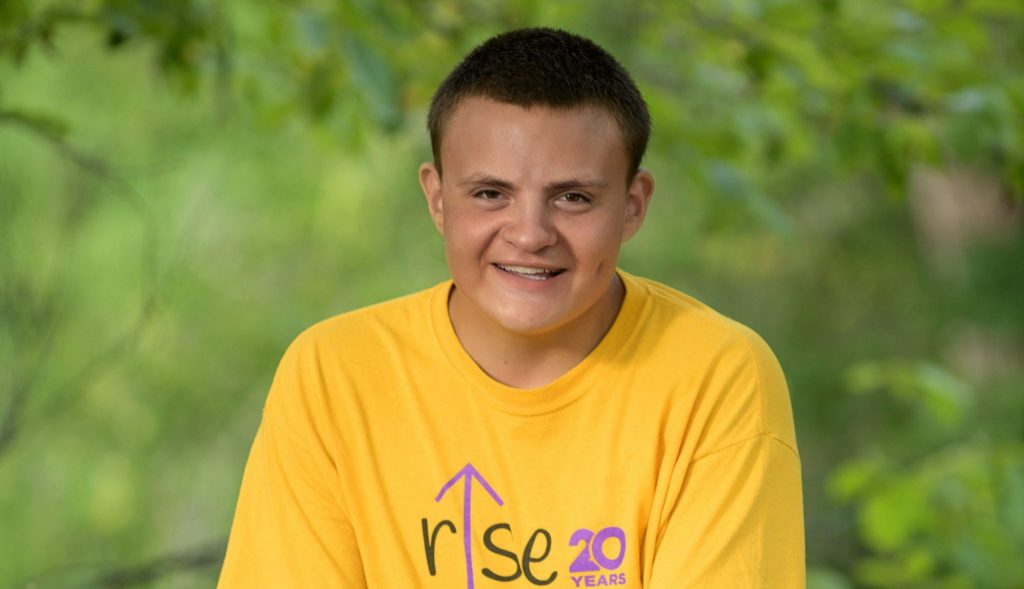Bryant Magnuson has lived most of his life with epilepsy and a pervasive developmental disorder, a form of autism. He was diagnosed at just a couple years old and is still working on finding the right medication and dose to control his seizures. Bryant doesn’t know a life without them.
“I don’t think epilepsy affects my life a lot. I like talking with people, playing basketball, tennis, swimming, biking, and walking our dog Bella,” says Bryant.
The Magnuson’s first connected with the Epilepsy Foundation of Minnesota (EFMN) years ago. Bryant’s parents, Lisa and Brian, aren’t quite sure how or when they first got involved, but have a feeling it probably had something to do with the Shining Stars program.
“We enjoy the family activities and get-togethers. Bryant gets to meet new kids and we all get to meet people from different parts of the area,” says Lisa Magnuson.
The EFMN get-togethers have moved online since the Stay at Home Minnesota order in March, which led Bryant to joining the Virtual Teen Connect Groups. The first of which was an online game of Pictionary.

During that same time, Bryant, like many other school-aged kids, was sent home and finished the school year through online distance learning. A challenge for many, but especially Bryant who has used an Individualized Education Plan (IEP) since entering the early childhood program Head Start.
“His original IEP was in Head Start and they were very helpful. They made the process easy. It has been amended by two schools since then. His current school has been a struggle to get them to understand that with his disabilities he can’t be treated like others his age. Just because he’s 15 doesn’t mean he can do everything independently like others can. He needs guidance,” says Lisa.
Bryant’s favorite classes are gym, math, and science. But it’s the group work and big projects that get him excited since it means he will be working with others.
“We want the IEP for extra academic help during his day as is needed, like extra time for assignments. We need them to keep him on task, keep him organized, and teach/reinforce in him independence skills. Most importantly, to monitor his seizures and document them,” says Lisa.
In preparation for the upcoming school year, whatever it may look like, having an IEP in place is necessary for many children with a learning disability. Whether that be updating last years, or creating your first. Schools and teachers are still trying to figure out how to best teach and connect with students, and the IEP is how you tell them to best help your child.
“Distance learning was hard for me because it was all online with no help from teachers, besides emails. I miss going to school every day and being able to see and talk with everyone,” says Bryant.
The Magnuson’s aren’t sure what the upcoming school year is going to look like for Bryant. Like many other parents, they’re forced to wait and see what the school year brings, whether it be in-person, online, or a hybrid format. However, it’s reinforced the need for them to be proactive in updating his IEP and setting guidelines the school, and Bryant’s teachers, must follow to support his education.
